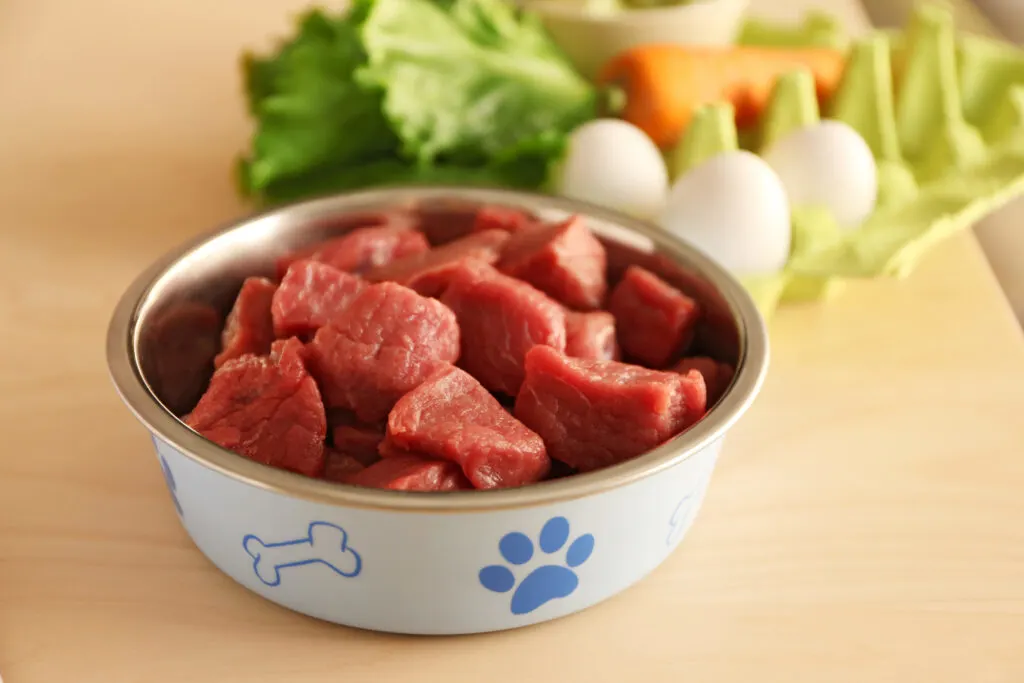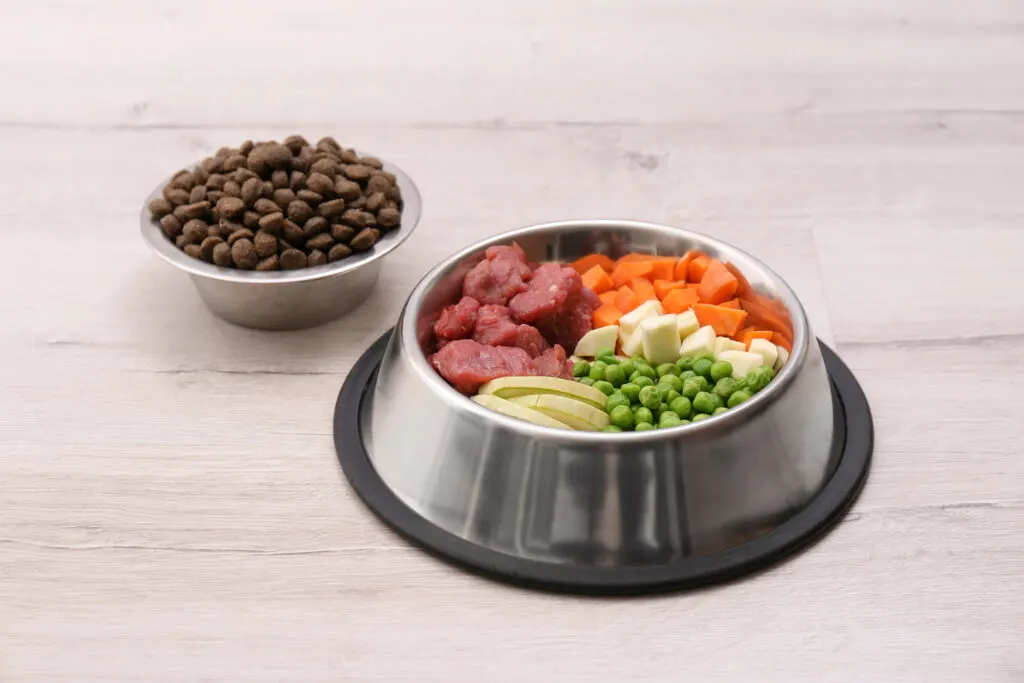Are you tired of constantly buying expensive, processed dog food that may not even be good for your furry companion? Have you considered incorporating raw food into your dog’s diet but don’t know where to start? Look no further!

Today, we will discuss the benefits of feeding your dog a raw food diet and provide tips on how to safely incorporate it into their meals. Your dog’s health and well-being are important, and choosing to feed them a raw food diet can have numerous benefits for their overall health.
Gradually Introduce Raw Food
When incorporating raw food into your dog’s diet, it is important to do so gradually. Suddenly switching to a completely new type of diet can cause digestive issues for your dog. Start by replacing a small portion of their regular food with raw food and slowly increase the amount over time. This will give your dog’s digestive system time to adjust and prevent any potential discomfort or issues. You can even start with making Homemade Air Fryer Dog Treats and go from there.
Additionally, gradually introducing raw food allows you to monitor your dog’s reaction and make any necessary adjustments to their diet. It may take some time for your dog to fully transition to a raw food diet, so be patient and go at their pace.

Use High-Quality Ingredients
When choosing ingredients for your dog’s raw food diet, it is important to prioritize quality. Ensure to find foods that will give you the full benefits of raw dog food, including high-protein meats, fresh fruits and vegetables, and healthy fats. Avoid any processed or low-quality foods as they may not provide the necessary nutrients for your dog’s health. It is also important to source ingredients from reputable sources to ensure their safety and quality.
Investing in high-quality ingredients may be more expensive initially, but it will pay off in the long run with a healthier and happier dog. Ensure to do your research and choose the best ingredients for your furry friend.
Balance Meat and Vegetables
A balanced diet is key to your dog’s health, so it is important to include both meats and vegetables in their raw food meals. Meats provide essential proteins and fats for energy, while vegetables provide vital vitamins, minerals, and fiber. Aim for a ratio of 80% meat to 20% vegetables in your dog’s meals.
Variety is also important when it comes to the types of meats and vegetables you include in their diet. Different meats provide different nutrients, so try to rotate between options such as chicken, beef, and fish. Similarly, switch up the types of vegetables you use to ensure a well-rounded diet for your dog.
Include Organs and Bones
In addition to meats and vegetables, it is important to include organs and bones in your dog’s raw food diet. Organs such as the liver, kidney, and heart are rich in essential nutrients like vitamins A and B12, iron, and zinc. Bones provide calcium and other minerals for strong bones and teeth.
When incorporating organs into your dog’s diet, start with small amounts and gradually increase over time. Be sure to also include a variety of organs for optimal nutrient intake. Additionally, make sure bones are raw and appropriate for your dog’s size and breed to avoid any potential choking hazards.
Add Supplements as Needed
While a well-balanced raw food diet can provide most of the necessary nutrients for your dog, it is important to consult with a veterinarian and consider adding supplements as needed. Some dogs may have specific health needs that require additional supplements, such as joint support or digestive enzymes.
Do your research and choose high-quality supplements specifically formulated for dogs. Be sure to follow the recommended dosage and monitor your dog’s reaction to ensure they are benefiting from the supplement. Supplements should not replace a balanced diet, but can be a helpful addition for certain health concerns.

Monitor Your Dog’s Health
As with any change in diet, it is important to closely monitor your dog’s health when incorporating raw food. Keep an eye out for any changes in their coat, skin, energy levels, or overall well-being. If you notice any negative changes, consult with a veterinarian and make necessary adjustments to their diet.
In addition to physical health, also pay attention to your dog’s behavior and mood. A healthy diet can improve not only their physical health but also their mental well-being. By regularly monitoring your dog’s health, you can ensure they are receiving the best nutrition possible from their raw food diet. Keeping track of their progress can also help you make any necessary changes to their diet for optimal health.
Incorporating raw food into your dog’s diet may seem daunting at first, but with the right knowledge and approach, it can greatly benefit their health. Gradually introducing raw food, using high-quality ingredients, balancing meats and vegetables, including organs and bones, adding supplements as needed, and monitoring your dog’s health are all important steps in safely incorporating raw food into their diet. With a well-balanced and nutritious raw food diet, you can give your furry companion the best possible nutrition for a long and healthy life. Remember to consult with a veterinarian and make any necessary adjustments along the way to ensure your dog is thriving on their new diet.